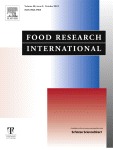Sensory profiling, the blurred line between sensory and consumer science : A review of novel methods for product characterization
Dublin Core
Título
Sensory profiling, the blurred line between sensory and consumer science : A review of novel methods for product characterization
Tema
Abstract
Sensory descriptive analysis is one of the most powerful, sophisticated and most extensively used tools in sensory science, which provides a complete description of the sensory characteristics of food products. Considering the economic and time consuming aspects of training assessor panels for descriptive analysis, several novel methodologies for sensory characterization have been developed in the last ten years. These methodologies are less time consuming, more flexible and can be used with semi trained assessors and even consumers, providing sensory maps very close to a classic descriptive analysis with highly trained panels. Novel techniques are based on different approaches: methods based on the evaluation of individual attributes (intensity scales, check-all-that-apply questions or CATA, flash profiling, paired comparisons); methods based on the evaluation of global differences (sorting, projective mapping or Napping®); methods based on the comparison with product references (polarized sensory positioning), and based on a free, global evaluation of the individual products (Open-ended questions). This review aims at reviewing theory, implementation, advantages and disadvantages of the novel product profiling techniques developed in the last ten years, discussing recommendations for their application.
Fuente
Editor
Fecha
Derechos
Información sobre Derechos de Autor
(Por favor lea este aviso antes de abrir los documentos u objetos)
La legislación uruguaya protege el derecho de autor sobre toda creación literaria, científica o artística, tanto en lo que tiene que ver con sus derechos morales, como en lo referente a los derechos patrimoniales con sujeción a lo establecido por el derecho común y las siguientes leyes
(LEY 9.739 DE 17 DE DICIEMBRE DE 1937 SOBRE PROPIEDAD LITERARIA Y ARTISTICA CON LAS MODIFICACIONES INTRODUCIDAS POR LA LEY DE DERECHO DE AUTOR Y DERECHOS CONEXOS No. 17.616 DE 10 DE ENERO DE 2003, LEY 17.805 DE 26 DE AGOSTO DE 2004, LEY 18.046 DE 24 DE OCTUBRE DE 2006 LEY 18.046 DE 24 DE OCTUBRE DE 2006)
ADVERTENCIA - La consulta de este documento queda condicionada a la aceptación de las siguientes condiciones de uso: Este documento es únicamente para usos privados enmarcados en actividades de investigación y docencia. No se autoriza su reproducción con fines de lucro. Esta reserva de derechos afecta tanto los datos del documento como a sus contenidos. En la utilización o cita de partes debe indicarse el nombre de la persona autora.
Formato
Idioma
Tipo
Identificador
Cobertura
Document Item Type Metadata
Original Format
- Fecha de agregación
- September 27, 2012
- Colección
- Bibliografía Nacional Química
- Tipo de Elemento
- Document
- Etiquetas
- Análisis sensorial, Comportamiento del consumidor, Perfiles del Consumidor
- Citación
- Varela, Paula, “Sensory profiling, the blurred line between sensory and consumer science : A review of novel methods for product characterization,” RIQUIM - Repositorio Institucional de la Facultad de Química - UdelaR, accessed August 25, 2024, https://riquim.fq.edu.uy/items/show/153.
- Archivos

